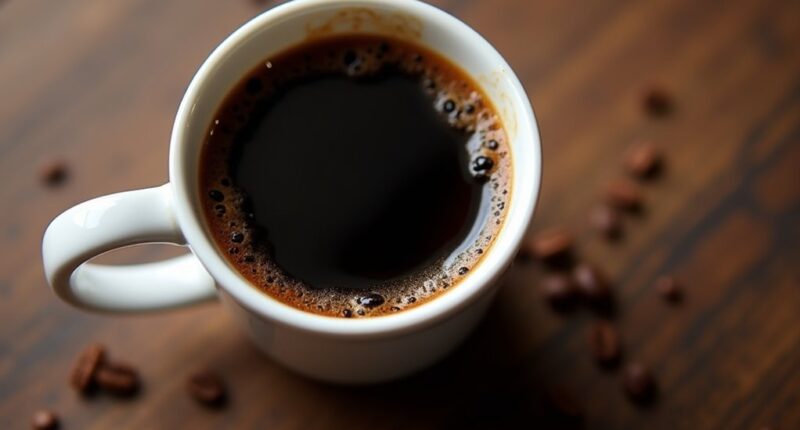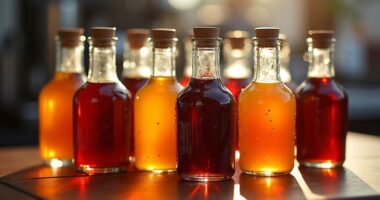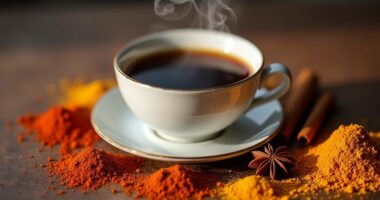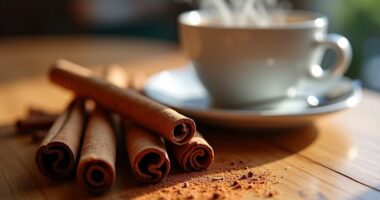Over-extracted espresso tastes like someone decided to make chocolate bitter and then forgot the sugar! You’ll get hit with a wall of intense bitterness that feels like chewing on bark. It leaves your tongue feeling dry and sandpapery, and the whole experience is just plain hollow, like sipping on burnt dreams. Trust me, it’s not what you want in your cup. If you stick around, you might pick up some tips to avoid this café tragedy!
At a Glance
- Over-extracted espresso has a bitter taste that resembles chewing on bitter bark, overshadowing sweetness and fruitiness.
- It often presents an astringent sensation, similar to sandpaper on the tongue, creating an unpleasant mouthfeel.
- The flavor profile is dull and hollow, with an unpleasant lingering aftertaste reminiscent of burnt offerings.
- Bitterness dominates, giving a flavor similar to harsh unsweetened chocolate, while acidity is muted and lifeless.
- Overall, the experience of drinking over-extracted espresso is unbalanced, lacking richness and fullness compared to well-extracted shots.
Characteristics of Over-Extracted Espresso
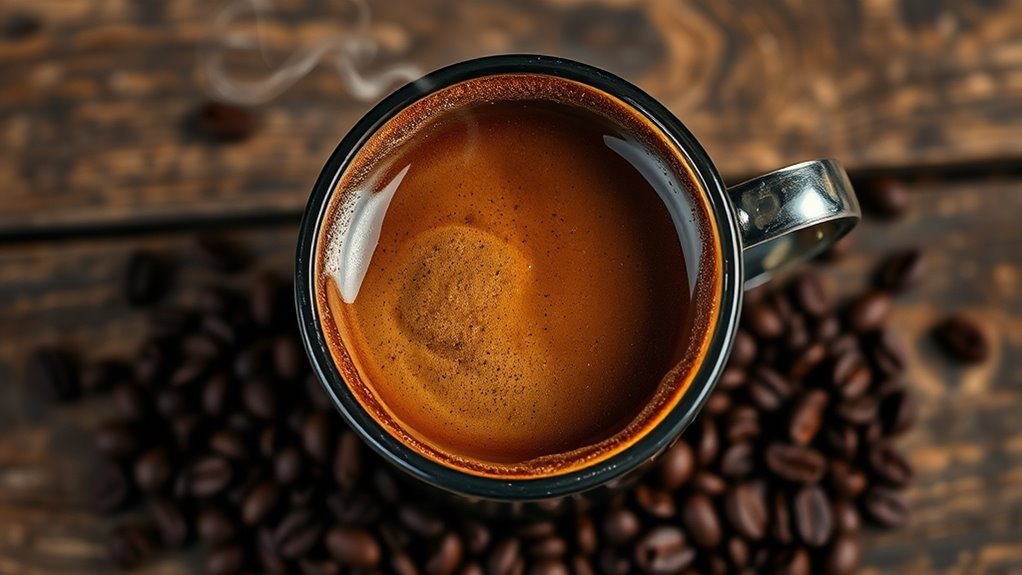
When you take a sip of your espresso and it feels like you’re chewing on a piece of bitter bark, you know something’s gone wrong.
The bitterness intensity is off the charts, drowning out any hints of sweetness or fruitiness. You might even notice that astringency sensation, like sandpaper on your tongue, making you crave water.
Instead of a rich, inviting flavor, you’re left with a dull, hollow taste that lingers in a not-so-friendly way.
It’s like drinking a burnt offering to the coffee gods—definitely not the warm hug you were hoping for.
To avoid this unpleasant experience, investing in a high-quality cappuccino machine can help ensure your espresso extraction is just right.
Let’s steer clear of that scene!
Causes of Over-Extraction
You’ve just tasted that bitter espresso disaster, and now you’re probably wondering what went wrong.
Over-extraction can sneak up on you! It might be those grind settings—you went a bit too fine, and now your coffee’s fighting for its life.
Or maybe you brewed too long, letting those bitter compounds crash the party.
Water quality matters too; if it’s too hot, it’ll burn your precious beans. The perfect temperature for espresso is crucial to avoid this issue.
And if you overloaded the portafilter? That’ll definitely leave you with a harsh brew.
Keep an eye on these factors, and you’ll be back to sipping smooth, delicious espresso in no time!
Effects on Flavor Profile
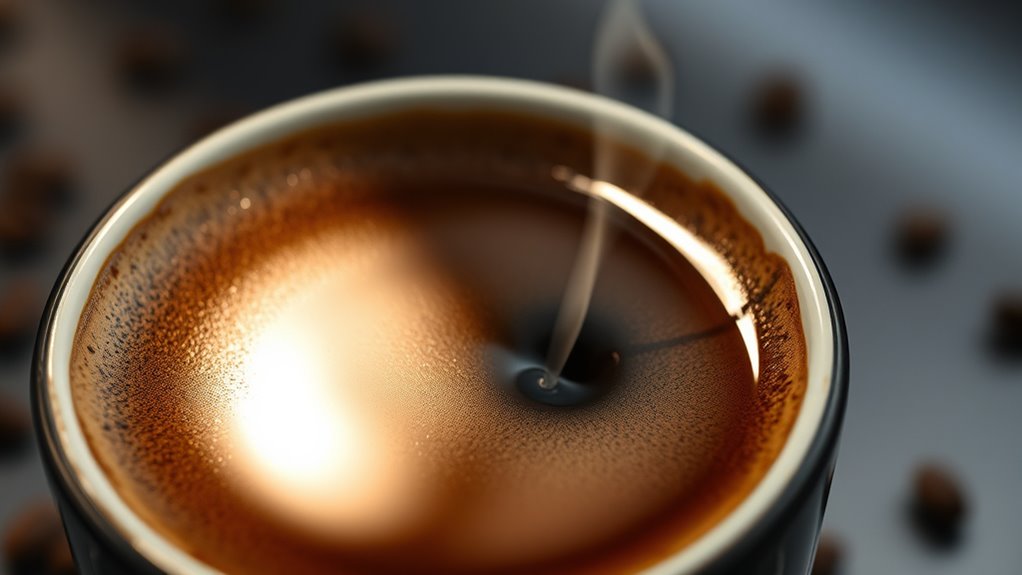
Over-extraction can really mess with your espresso’s flavor, leaving you with a cup that’s more bitter than a breakup. You’ll notice a flavor imbalance where bitterness takes over, overshadowing sweetness and acidity. The astringency makes your mouth feel dry, and the body feels hollow, like a deflated balloon. Here’s a quick look at how over-extraction impacts your sensory experience:
| Flavor Aspect | Description | Result |
|---|---|---|
| Bitterness | Harsh, unsweetened chocolate | Dominates flavor |
| Astringency | Dry, puckering sensation | Disrupts smoothness |
| Hollow Body | Lack of richness and fullness | Feels empty on the palate |
| Muted Acidity | Dull, lifeless flavors | Loses vibrancy |
To fully appreciate the nuances of your espresso, it’s crucial to understand the importance of coffee extraction in achieving the perfect balance.
Comparison to Under-Extraction
While it might be easy to think that over-extraction is the worst thing that can happen to your espresso, under-extraction can actually be just as problematic, but in a totally different way.
Imagine sipping on a cup that’s watery and sour—yikes! It lacks that rich flavor balance we all crave.
With under-extraction, your brewing techniques might need a tweak, like adjusting grind size or brew time. You want a lovely, well-rounded shot, not something that feels like a bad first date. For instance, using the right drip coffee maker can significantly enhance the flavor profile of your brews.
Identifying Over-Extraction
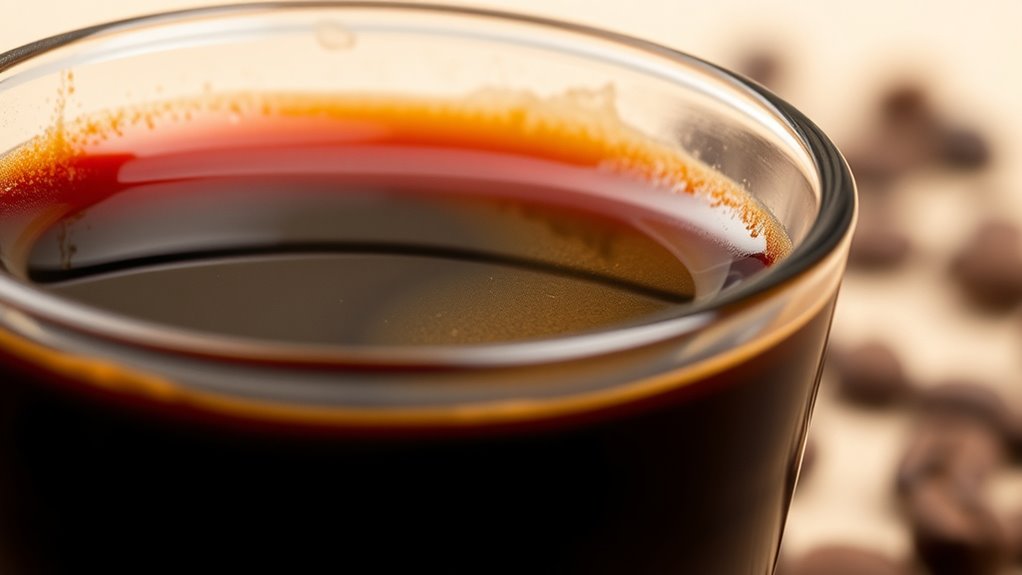
When you’re brewing espresso, it can feel like walking a tightrope—one wrong step, and you could end up with a cup that’s more bitter than your ex’s excuses! To identify over-extraction, pay attention to these tasting notes during your sensory evaluation:
| Flavor | Description | Indicator |
|---|---|---|
| Bitterness | Sharp, prickly flavor | Overpowers sweetness |
| Astringency | Dry, unpleasant mouthfeel | Leaves a harsh aftertaste |
| Hollow/Burnt | Lack of richness | Tastes thin and burnt |
Keep these in mind, and you’ll steer clear of that bitter disaster! Understanding the importance of grind size can also help you avoid over-extraction.
Adjusting Brewing Parameters
Getting the perfect espresso shot is like chasing the ultimate coffee dream, and adjusting your brewing parameters is key to making that dream a reality!
Start by fine-tuning those grind adjustments, because the size really affects how the water flows. And don’t forget about your brew ratios; they can totally change your espresso vibe!
Here are a few tips to help you out:
- Experiment with grind size to control extraction speed.
- Play around with brew ratios for different flavor profiles.
- Keep dose measurements precise for consistency.
- Trust your taste buds, and have fun with it! Additionally, understanding the brewing technology efficiency can enhance your espresso-making skills.
Enjoy the journey!
Tips for Preventing Over-Extraction
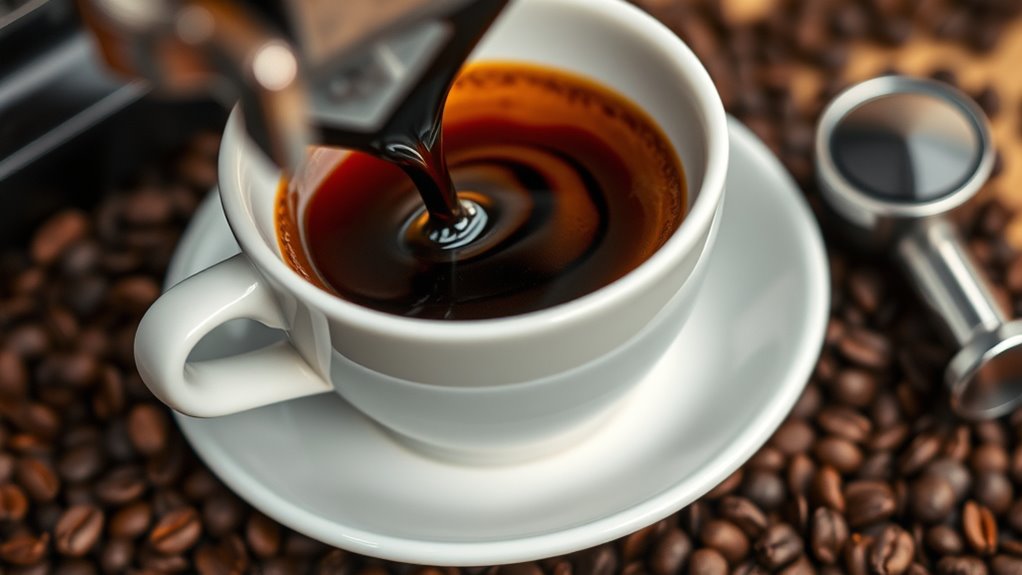
Espresso enthusiasts, listen up! Want to avoid that bitter brew? Start with fresh beans—grind size matters! A coarser grind speeds up extraction, while tamping pressure plays a big role too.
Keep an eye on your brew time; too long, and you’ll extract those nasty flavors. Nail that coffee-to-water ratio for a balanced cup. Don’t forget water quality; pure water keeps things consistent.
Brew time, coffee-to-water ratio, and water quality are key to avoiding bitter flavors and achieving espresso perfection!
Aim for ideal water temperature between 195°F and 205°F. Mastering these extraction techniques will help you create a delicious espresso, not a bitter nightmare. Additionally, investing in a good burr grinder can significantly improve your grind consistency and overall flavor extraction.
Cheers to sipping perfection with friends, one shot at a time!
